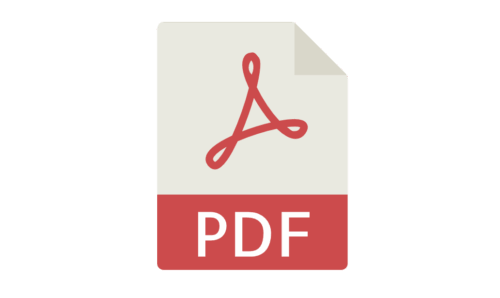Choosing the right document viewer for display is a crucial step in your journey to developing a web application. The document viewer should be able to balance functionality with a smooth user experience.
Developers must evaluate various factors to guarantee efficiency, performance and compatibility. This post will help you identify the various metrics which will determine the success of your user’s document viewing experience.
Rendering Quality
One of the most important aspects of a document viewer is its rendering quality. A high quality viewer should effortlessly preserve the integrity of fonts, images and colours exactly as they appeared on the original document.
Your best bet would be to rely on a 100% HTML-based solution, as this will be compatible regardless of the browser platform. HTML based viewers are also best suited for display on browsers, across any screen size without the need for additional plug-ins.
Furthermore, if the viewer renders bitmap-based pages or renders entirely using Canvas, then cut-and-paste becomes either very limited or impossible. If this is something you’re looking for then you should choose a document viewer that display text as actual text.
With true text reflows the document is adjusted automatically so the text fits different screen sizes while image-based content remains fixed.
This table explains different rendering techniques along with their pros and cons:
| Rendering Method | Pros | Cons |
|---|---|---|
| Bitmap with Invisible Text Layer | Fast rendering Consistent appearance Works well for complex documents | Large files Poor accessibility Selectable text requires accurate invisible layers |
| Text and Images (HTML-Based) | Fully selectable, searchable, and accessible Better for responsive layouts | Complex to maintain layout fidelity with original PDF May misalign on some documents |
| Canvas Rendering | Very accurate visual rendering Good for preserving styles/fonts | No selectable text unless overlaid Not great for accessibility or screen readers |
| Shape Text with Invisible Text | More accurate text rendering with visual fidelity Selectable if invisible text is present | Heavier on the browser Harder to maintain |
Performance & Speed
Unlike PDFs, which often require users to load the entire document before viewing, an optimized HTML-based document viewer can display individual pages without requiring the full document to be loaded.
This would not only improve performance but also reduce bandwidth, avoiding using unnecessary computing resources. Reduced bandwidth consumption is helpful for locations where bandwidth allowance by ISPs is low.
An ideal document viewer should offer easy document navigation and provide thumbnail previews as well. Being able to jump directly to the relevant section through links is also an added bonus that will enhance user experience.
In addition the document viewer should have smooth scrolling, bookmarking and a essential search function. Having these features contributes to a more intuitive navigation experience.
Customization and Integration
Flexibility is key when integrating a document viewer into an application. Developers prefer solutions which allow UI customization such as with themes, to match the app’s branding and user experience.
With HTML you also have the option use a robust JavaScript API and add additional features. This would work best with document viewers that offer barebones layout for you to build on top of.
Security
A reliable document viewer should operate without requiring external dependencies, plug-ins, or additional downloads, reducing security vulnerabilities.
It should also provide features to prevent unauthorized actions such as downloading or printing sensitive content. Implementing access controls and encryption adds an extra layer of security.
Scalability & Maintenance
Frequent updates are essential to ensure compatibility with the latest web standards and security protocols. It is also essential to tackle high traffic and large document volumes efficiently.
A scalable solution ensures smooth performance even as the number of users and documents increases. A factor you will find useful is whether your viewer relies on client side rendering or server side rendering.
Our IDRviewer is a lightweight pure HTML-based document viewer that comes included with BuildVu, the best tool for converting PDF to HTML. You can use BuildVu to convert your PDF documents directly to HTML.
BuildVu allows you to
| View PDF files in a Web app |
| Convert PDF documents to HTML5 |
| Parse PDF documents as HTML |
What is BuildVu?
BuildVu is a commercial SDK for converting PDF files into standalone HTML or SVG.
Why use BuildVu?
BuildVu allows you to integrate PDF into your HTML workflow effortlessly and securely by producing clean HTML that is easy for developers to work with.
What licenses are available?
We have 3 licenses available:
Cloud for conversion using the shared IDRsolutions cloud server, Self hosted server option for your own cloud or on-premise servers, and Enterprise for more demanding requirements.
How to use BuildVu?
Want to learn more about BuildVu and how to use it, we have plenty of tutorials and guides to help you.
